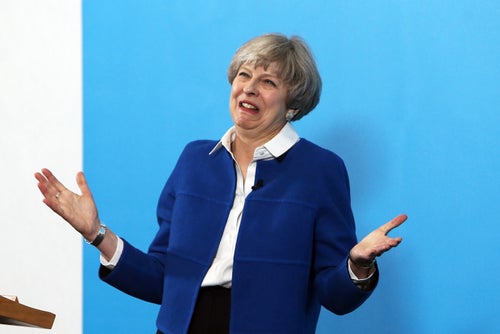Shock exit poll results on Thursday indicate Theresa May will fall short of an overall majority, meaning the UK could be headed for a hung parliament.
According to the BBC/Sky News/ITV poll released at 10pm, the Conservative Party will lose the slim majority it won in 2015. On Friday it will be determined who has won the general election 2017
If the poll is accurate, the Tories will win 314 seats, with Labour behind on 266 - both short of the 326 required to secure a majority. The Conservatives may need to join forces with the Democratic Unionist Party to form a government


But what is a hung parliament and what could this mean for our future government?
Here’s everything you need to know:
What is a hung parliament?
A hung parliament means that no single political party has managed to secure an absolute majority of the seats in the House of Commons.
There are 650 seats in the commons, meaning that a party must win 326 seats to secure an absolute majority.
What happens if there is a hung parliament?
When a parliament is hung then the incumbent prime minister stays in office until it can be decided who will attempt to form a new government.
If a party fails to win the majority of seats, they can choose to form either a coalition or rule as a minority government.
Being a minority government can be challenging as the ruling party is still reliant on the support of smaller parties to pass legislation.
Alternatively, a coalition can be formed.
Has there ever been a hung parliament in the UK?
Yes. Most recently the Conservatives under David Cameron failed to secure a majority in the 2010 General Election.
That year the Tories only managed to win 306 seats - 20 seats short of the required amount.
Labour, led by Gordon Brown, lost its overall majority after 13 years in power.
The result led to five days of negotiations between the figures from the two largest parties and Nick Clegg’s Liberal Democrats, the latter of which had 57 seats.
Even if the Lib Dems formed a coalition with Labour, they would have been short the required amount to form a majority.
The Scottish National Party hinted it would be willing to join Labour and the Lib Dems as part of a rainbow coalition.
Yet despite Brown stepping aside as leader mid-way through negotiations with the Lib Dems, Labour failed to reach an agreement with Clegg’s party.
The Tories formed a coalition with the Lib Dems on May 12, 2010.
In 1974 there was also a hung parliament, despite many at the time expecting a Conservative victory for Edward Heath.
Labour won 301 seats and the Tories got 297. Heath stood down and Labour’s Harold Wilson became prime minister after forming a minority government.